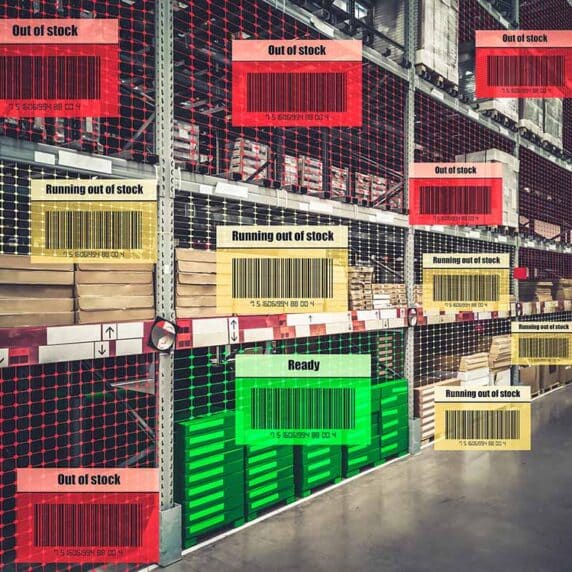Smarter Back-to-School Replenishment with AI
The back-to-school shopping season is a critical period for retailers, offering significant revenue potential but also complex planning challenges. In 2025, factors like inflation, global trade disruptions, and increasingly cautious consumer behavior are reshaping this landscape. To navigate these changes, retailers are rethinking how they plan, replenish, and price their assortments—and turning to AI-powered systems for smarter back-to-school replenishment with AI.
A Season of Shifting Behaviors and Rising Pressures
Back-to-school shopping is essential for most families, covering necessities like clothing, supplies, electronics, and educational materials. However, this year presents unique challenges:
- Tariffs on key imports like electronics and apparel are affecting supply costs and pricing strategies.
- Inflation concerns are leading even higher-income shoppers to seek discounts and reassess what is essential.
- Early shopping is increasing, with over 25% of shoppers starting by early June to avoid price hikes, according to the National Retail Federation (NRF).
- Essentials-only strategiesare being adopted by more households, particularly those earning under $50,000, as highlighted in the NRF’s 2025 back-to-school consumer insights.
These factors, combined with lingering inventory disruptions and changing channel preferences, make this season more complex.
Why AI Is Essential for Smarter Back-to-School Replenishment
Traditional planning methods, which rely on historical trends and fixed order windows, often fall short in today’s volatile market. Retailers now need to:
- Monitor real-time changes
- React swiftly to early or phased purchasing behavior
- Avoid stockouts and excess inventory
- Manage localized and category-specific variations
AI-based replenishment solutions provide precision by continuously analyzing data from multiple sources—POS systems, e-commerce channels, promotions, and macroeconomic indicators. These systems update forecasts in real-time and offer SKU-location level replenishment recommendations.
This enables retailers to:
- Adjust stock levels dynamically across stores, regions, and fulfillment hubs
- Prioritize high-demand products like technology and footwear based on current trends
- Replenish based on probability, considering forecast uncertainty and service levels
Meeting Essentials-Only Demand with Smarter Back-to-School Replenishment
According to NRF, one of the clearest shifts in 2025 is the move toward essentials-only purchasing—especially among lower-income households. More than half of these shoppers plan to buy only what’s needed for the first few weeks of school, replenishing later as finances allow.
This breaks from the traditional one-time, full-season shopping pattern, requiring flexible in-season replenishment to respond to new demand peaks in late August or September.
AI-powered systems offer this flexibility by:
- Dynamically updating forecasts with new POS data and sales trends
- Recommending rolling replenishment cycles aligned with consumer behavior
- Supporting multi-phase inventory strategies to mitigate risk during uncertain periods
Instead of bulk early orders, planners can manage smaller, targeted shipments throughout the season, improving accuracy and reducing excess inventory.
Pricing Strategies Under Pressure
Consumers are becoming more selective, using digital tools to find the best deals and often waiting for promotions. Rising service costs are pushing retailers to adopt more strategic pricing tactics.
Effective pricing must be:
- Segmented across channels, regions, and customer profiles
- Responsive to current demand and competitor activity
- Aligned with inventory positions to maximize margin or clear stock
Modern promotion and pricing optimization tools use AI to simulate the effects of different pricing strategies across products, customer segments, and time periods. These tools can model:
- Elasticity at a granular level to predict sales lift from markdowns
- Cannibalization and halo effects across categories
- Promotion fatigue and timing sensitivities
Channel Behavior and Fulfillment Complexity
Consumer shopping behavior is fragmenting across digital and physical channels. Gen Z parents are more likely to shop in stores, while Gen X and Millennials prefer online or hybrid experiences. Higher-income households tend to shop online, while lower-income households rely more on in-store purchases, as detailed in PwC’s 2025 Back-to-School Survey.
Replenishment and pricing strategies must now be channel-aware:
- Ensuring the right quantities available are available at the store level for last-minute, essentials-only purchases
- Maintaining accurate inventory visibility across digital platforms for early online shoppers
- Providing consistent promotional offers across channels or tailoring them based on channel usage
Solutions that integrate end-to-end inventory visibility with AI-based forecasting and price simulation are essential for managing this growing complexity. Better integration helps avoid siloed decisions and support consistent customer experiences.
Planning for Uncertainty: Forecasting Beyond Averages
Seasonal plans often rely on the “most likely” scenario, but today’s environment demands readiness for a range of outcomes. From port disruptions to tariff changes, retailers must prepare for uncertainty.
AI-based demand forecasting goes beyond static averages, offering probabilistic demand distributions across SKU-location-time combinations. This empowers teams to:
- Prepare for various scenarios
- Make risk-aware stock allocation decisions
- Set appropriate service levels based on item criticality and margin impact
These capabilities help retailers avoid lost sales due to understocking and minimize markdowns from excess stock.
Enhance Agility with Smarter AI-Driven Back-to-School Replenishment
The 2025 back-to-school season reflects the larger retail environment: fast-moving, data-rich, and full of uncertainty. Shoppers are starting earlier, spending more strategically, and demanding both value and availability.
Success this year hinges not on guesswork or historical averages, but on intelligent systems that turn signals into decisions in real time.
AI-driven replenishment, pricing, and forecasting solutions enable retailers to shift from reactive execution to data-led strategies that balance service, cost, and risk.
Whether planning for early surges, essentials-only restocking, or phased promotional activity, these technologies help meet consumers where they are and deliver what they need, when they need it.









